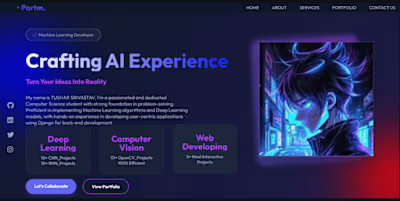Toxic Comment Classification with TensorFlow and Gradio
Toxic Comment Classification with TensorFlow and Gradio
This project builds a machine learning pipeline to classify comments for various types of toxicity using a Bidirectional LSTM model. It includes data preprocessing, training, evaluation, and a user-friendly Gradio interface for prediction.
Dataset
Features
Multi-label classification for six toxicity categories:
Toxic
Severe Toxic
Obscene
Threat
Insult
Identity Hate
Preprocessing with TensorFlow's
TextVectorization.Interactive Gradio interface for testing the model.
Model evaluation with metrics such as Precision, Recall, and Accuracy.
Requirements
Python 3.7+
TensorFlow 2.0+
Pandas
Numpy
Gradio
Matplotlib
Install dependencies using: pip install tensorflow pandas numpy gradio matplotlib
Code Workflow
1. Data Preprocessing
Text Tokenization and Padding:
Utilizes TensorFlow's
TextVectorization to preprocess the input text by converting words into numerical tokens and padding sequences to a fixed length.Data Pipeline Creation:
Builds an efficient data pipeline using TensorFlow's
Dataset API for caching, shuffling, batching, and prefetching data to improve performance.2. Model Architecture
Embedding Layer:
Converts input text into dense numerical vectors for the model to process.
Bidirectional LSTM Layer:
Captures context from both forward and backward directions in the text sequence, enabling the model to understand relationships between words effectively.
Dense Layers:
A series of fully connected layers to extract features and classify the input data.
Output Layer:
Contains six neurons with sigmoid activation functions for multi-label classification of the toxicity categories.
3. Training and Evaluation
Model Compilation:
The model is compiled using the Adam optimizer and binary cross-entropy loss for multi-label classification.
Data Splits:
Training Set: 70% of the dataset used to train the model.
Validation Set: 20% of the dataset used for hyperparameter tuning and monitoring performance.
Test Set: 10% of the dataset used to evaluate the final model.
Evaluation Metrics:
The model's performance is evaluated using metrics like Precision, Recall, and Accuracy.
4. Gradio Interface
Interactive Interface:
Implements a Gradio app to accept user inputs as text and display predictions for each of the six toxicity categories.
Real-time Prediction:
Users can input any comment, and the app predicts the likelihood of each toxicity type in real-time.
--Compile the model using the Adam optimizer and binary cross-entropy loss. --Train with 70% of data, validate with 20%, and test with the remaining 10%.
Gradio Interface
--Implements a Gradio app to accept user input and display toxicity predictions.
#This file can now be directly saved as
README.md and used for your project. Let me know if further customization is needed!Like this project
Posted Apr 2, 2025
Contribute to Lucifer1406/Deep_Learning_RNN_Based_Projects development by creating an account on GitHub.
Likes
0
Views
0
Clients



Webpages

ML

Data Analyst Jobs






